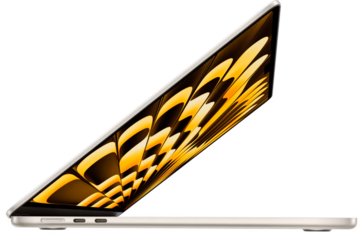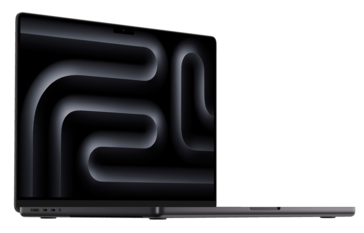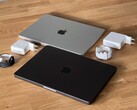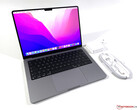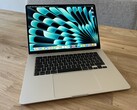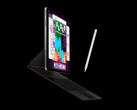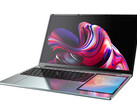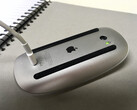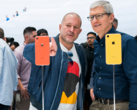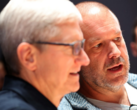Highly regarded, and now retired, tech journalist Walt Mossberg has revealed in an episode of The Vergecast that Jony Ive had plans to merge the MacBook Air and MacBook Pro models into a single product line. Although Mossberg was only able to refer to a single unnamed source within Apple who told him the story, he says that the source was quite high-level within Apple and worked on its product teams. The exact timeline of when this envisioned Macbook product line merger would have taken place, but it appears that the timing could potentially have coincided with the launch of Apple’s first Apple silicon MacBooks in late 2020 had Ive had his way.
The story is plausible for a number of reasons, including the fact that Ive was well-known for his “thinnovation” philosophy – sometimes arguably at the expense of practicality. When Apple introduced the 12-inch Retina MacBook in 2015, it was touted by the company as being “the future of the MacBook.” It was the ultimate ultra-portable on the market at the time, and the thinnest and lightest MacBook ever at just 0.52-inches (13.1 mm) thin and weighing just 2.03 pounds (0.92 kg). However, its Intel Core M chip, while only drawing 5W, was underpowered and the device itself very expensive. Apple eventually deleted it without even giving it an upgrade.
According to Mossberg, Ive’s single MacBook product line was seemingly intended to deliver on the vision encapsulated in the 12-inch MacBook. Ive is said to have wanted this new merged MacBook to be thin and light, but also with the performance of MacBook Pro. While this was effectively impossible with Intel silicon, Apple had been cooking up silicon for its Macs and MacBooks for some time with the rumors of an Apple A5-powered MacBook first surfacing in 2011 before Steve Jobs sadly passed away later that year.
However, between 2015 and the launch of the M1-powered MacBook Air and Pro in 2020, Apple had caught a lot of flak for its 2016 MacBook Pro line. They were criticized for being prone to severe CPU throttling, relying too heavily on USB-C ports only (necessitating the use of port adapter dongles) and their failed ultra-low profile butterfly keyboards which routinely got stuck requiring replacement. According to Mossberg, there was a big struggle internally between Ive’s design team and the product and marketing teams which didn’t want to see Apple’s MacBook Pro and MacBook Air merged into a single product line. The Air had long been Apple’s best-selling MacBook line, and MacBook Pro models were also good sellers.
As we can now plainly see, Ive ultimately lost that battle and Apple went on to launch its then all-new M1 silicon; oddly it must be said, in its older 13-inch MacBook Air and MacBook Pro designs where one might have actually expected Apple to unveil the new MacBooks (or MacBook ?) in an all-new design. It indeed may have been Ive’s plan as per Walt Mossberg’s story about a merger between the MacBook Air and MacBook Pro lines, as Apple’s silicon could very well have made such a MacBook (non-Air, non-Pro) possible. It could also explain why Apple launched its new class-leading silicon in the older MacBook models as the purported single MacBook model approach was scrapped.
It wasn’t until a year after the launch of the first M1 MacBooks that Apple launched the all-new M1 Pro and M1 Max 14-inch and 16-inch MacBook Pro designs in October 2021. These were well-received by Apple fans and critics alike and were viewed as, in many ways, a reaction to the previous generation of MacBook Pro models first introduced in 2016. In fact, rather than being thinner as the new Apple silicon could easily have permitted, the new models were slightly thicker providing an abundance of thermal headroom, reintroduced an HDMI port and MagSafe charging, dropped the Touch Bar and reintroduced traditional scissor-switch mechanism keyboards. The all-new MacBook Air was launched a full 18 months after the launch of the first M1-powered MacBooks in June 2022, debuting with Apple’s M2 silicon onboard.
Mossberg’s story is certainly an interesting one, The new 14-inch and 16-inch MacBook Pro arguably amount to a repudiation of the design and engineering approach Apple had taken under Ive for the trouble-plagued MacBook Pro series introduced in 2016. Ive as we know, left Apple in 2019 – the year before the first Apple silicon MacBooks launched – although he did continue consulting for Apple through to July 2022. Possibly the last Apple products to carry Ive’s design DNA are the Apple Watch Ultra, while he is reported to have also contributed to the design of the Vision Pro.
The Vergecast episode is linked below. It is interesting to hear Mossberg retell this story, along with thoughts on the 40th anniversary of the Mac and how it defined modern personal computing as we know it today. He is also asked for his thoughts on the Vision Pro and Apple’s vision for it as a potential new computing paradigm that could potentially replace the Mac or even the iPhone one day. On this subject, and the subject of Tim Cook, Mossberg is noticeably less enthusiastic. Of Tim Cook, he says he has met him a few times and says that while he is nice and a smart guy (and Apple is more successful than ever before), he laments – as Jobs did in the Isaacson biography – that Cook “is not a product guy.”
Would you have liked to see the MacBook Air and MacBook Pro models merged into a single MacBook line as Ive had envisioned? Let us know your thoughts in the comments.


 Deutsch
Deutsch English
English Español
Español Français
Français Italiano
Italiano Nederlands
Nederlands Polski
Polski Português
Português Русский
Русский Türkçe
Türkçe Svenska
Svenska Chinese
Chinese Magyar
Magyar
